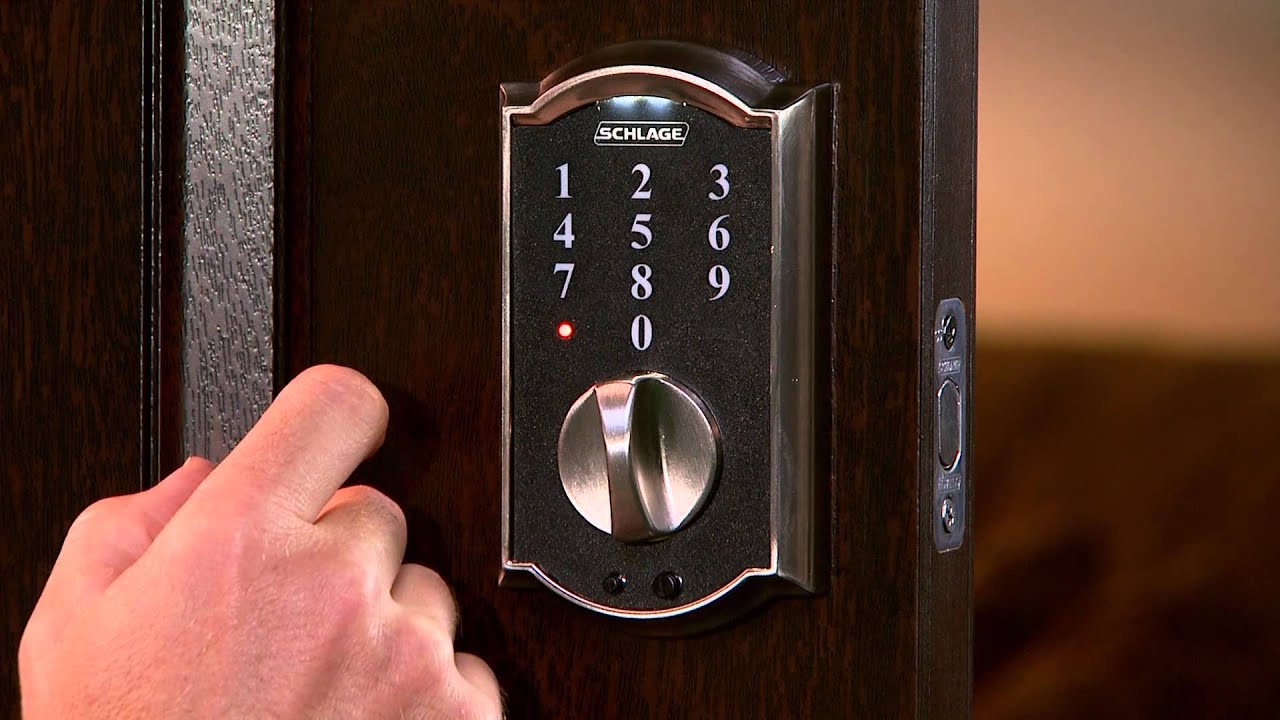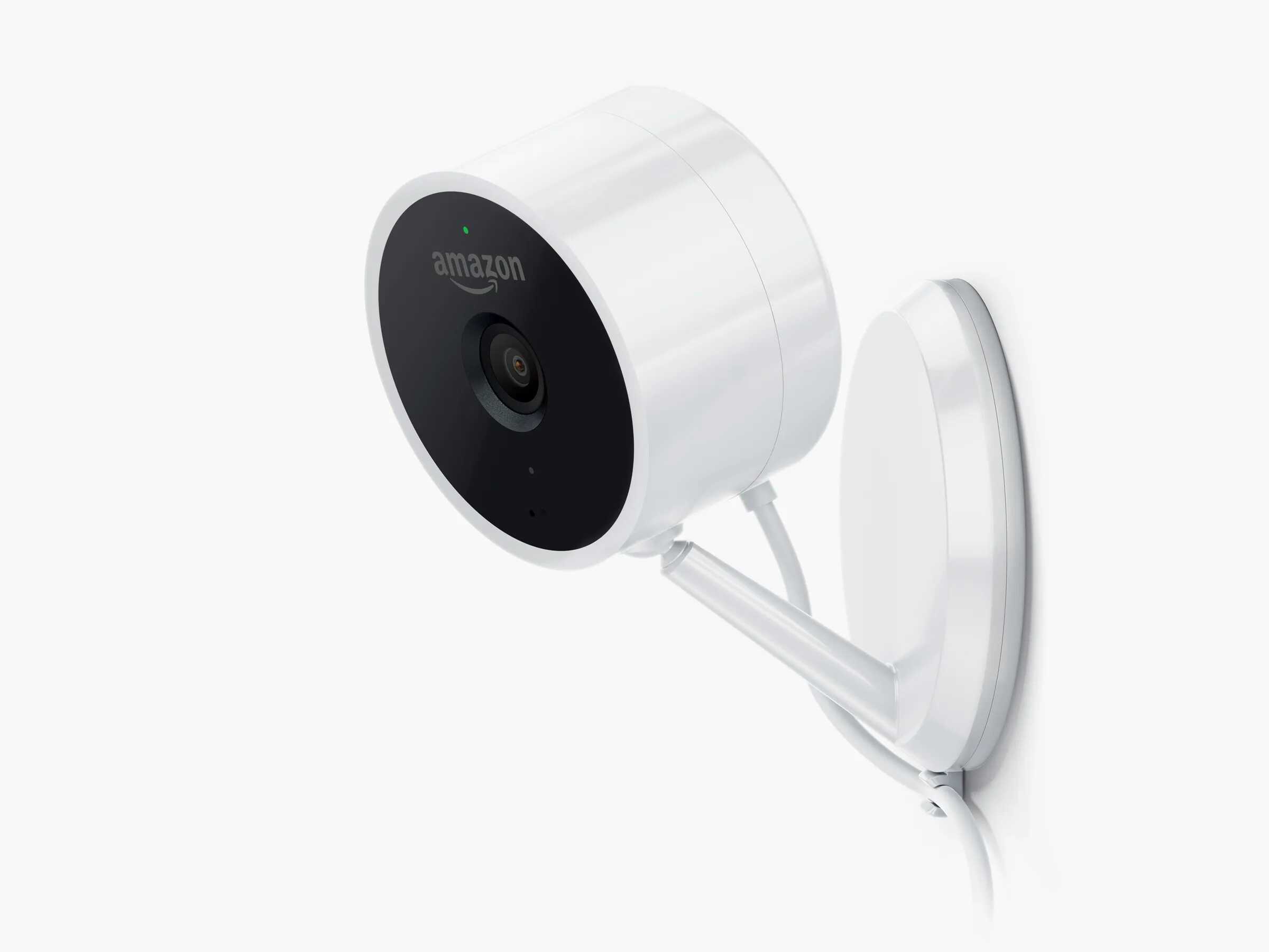Introduction
Home security alarms are an essential component of residential security systems, providing peace of mind and ensuring the safety of your household. However, there may be circumstances in which you need to disable your home security alarm temporarily or permanently. Whether you’re planning renovations, experiencing false alarms, or simply no longer require the alarm system, knowing how to properly disable it is crucial.
In this guide, we will explore the various methods of disabling home security alarms. It’s important to note that tinkering with your security system should only be done with absolute necessity, as a functioning alarm system plays a vital role in safeguarding your home and loved ones. Before proceeding with any disabling methods, you should thoroughly consider the reasons behind your decision and any potential legal and ethical implications.
Understanding the inner workings of home security alarms is essential for successfully disabling them. Most alarm systems consist of a control panel, sensors (such as door/window sensors and motion detectors), a siren, and a communication module. These components work together to detect and alert you about possible intrusions or emergencies. Disabling the alarm may involve tampering with one or more of these components, but it should be approached with caution and responsibility.
Therefore, before diving into the methods of disabling home security alarms, it’s crucial to address the reasons that may lead you to do so. Whether it’s due to a malfunctioning system, false alarms causing inconvenience, or a change in your security needs, understanding your motivations will help you determine whether disabling the alarm is the best course of action.
Understanding Home Security Alarms
Home security alarms are designed to protect our homes, valuables, and loved ones from potential threats. They work by detecting unauthorized entry, alerting homeowners, and, in some cases, notifying authorities. Understanding the basic components of home security alarms will provide valuable insights when it comes to disabling them.
1. Control Panel: The control panel acts as the brain of the security system. It allows you to arm and disarm the alarm, enter passcodes, and manage various settings. Depending on the make and model, the control panel may have a touch screen or physical buttons for navigation.
2. Sensors: Sensors play a crucial role in detecting and triggering the alarm. Door/window sensors are placed on entry points to detect if they are opened or tampered with. Motion sensors can detect movement within specific areas of the home. Glass break sensors can detect the sound of breaking glass, while smoke and carbon monoxide detectors sense potential hazards.
3. Siren: When an intrusion or threat is detected, the siren sounds to alert occupants and deter intruders. The volume and intensity of the siren may vary depending on the system.
4. Communication Module: Many modern security systems are equipped with a communication module that allows remote monitoring and alerts. This module may use landline phone connections, cellular networks, or internet connectivity to communicate with a central monitoring station or homeowner’s smartphone.
5. Keypad: The keypad is typically mounted near the main entrance and serves as a user interface for arming, disarming, and configuring the alarm system. It usually requires a unique passcode to access and control the system.
6. Backup Power: The alarm system may have a backup power source, such as batteries, to ensure it remains operational during power outages.
Understanding these components will help you identify which areas to focus on when disabling the alarm. It’s important to note that tampering with certain components may result in disabling the system but could also trigger a tamper alarm that notifies the monitoring company or authorities.
Now that we have a basic understanding of home security alarms, let’s explore the reasons you may consider disabling them and the legal and ethical considerations that should be taken into account.
Reasons for Disabling Home Security Alarms
There can be various reasons why you might need to disable your home security alarm system. While these systems are designed to provide protection and peace of mind, certain situations may arise where disabling the alarm becomes necessary. It’s important to carefully consider your reasons before proceeding, as disabling your home security alarm should only be done in exceptional circumstances.
1. Home Renovations: If you’re planning extensive renovations or remodeling in your home, disabling your alarm temporarily can prevent false alarms triggered by construction activities. It can also avoid potential damage to sensors or the control panel during the renovation process.
2. False Alarms: False alarms can be a nuisance, causing inconvenience to you and your neighbors. If your alarm system is prone to frequent false alarms due to technical issues or environmental factors, temporarily disabling the system while addressing the root cause can provide relief and prevent unnecessary disruptions.
3. Lifestyle Changes: Changes in your lifestyle or living arrangements might necessitate disabling the alarm system. For example, if you have a live-in caregiver or cleaning service that requires access to your home during specific times, temporarily disabling the alarm can prevent false alarms triggered by authorized personnel.
4. Malfunctioning System: If your home security alarm system is malfunctioning or in need of repairs, disabling it temporarily can prevent false alarms and allow for troubleshooting or professional maintenance. However, it’s important to seek professional assistance to diagnose and fix any issues promptly.
5. Enhanced Security: In some cases, individuals may choose to disable their home security alarms due to the implementation of advanced security measures or the use of alternative security systems. This can be a personal preference or a decision based on comprehensive security upgrades.
While these reasons may justify the need to disable your home security alarm, always consider the potential risks and consequences. Disabling your alarm system means temporarily sacrificing the protection it provides, leaving your home more vulnerable to intrusions or emergencies. It’s crucial to weigh these factors and ensure that alternative security measures are in place during the disabling process.
Legal and Ethical Considerations
When it comes to disabling your home security alarm system, it’s important to consider the legal and ethical implications involved. While you may have valid reasons for wanting to disable the system, it’s crucial to ensure that you are acting within the boundaries of the law and adhering to ethical guidelines.
1. Local Regulations: Before disabling your home security alarm, familiarize yourself with any local regulations or laws governing alarm systems in your area. Some jurisdictions may require permits or notifications for disabling or modifying alarm systems. It’s essential to follow these regulations to avoid potential legal repercussions.
2. Contractual Obligations: If your home security alarm system is monitored by a security company, review your contract and obligations with them. Some contracts may stipulate how the system can be disabled or require notifying the security company before doing so. Failure to comply with contractual obligations may result in penalties or termination of service.
3. False Alarm Policies: Understand the policies of your local authorities and alarm monitoring company regarding false alarms. Excessive false alarms caused by a disabled system may not only result in fines but also strain emergency response resources. It’s important to take responsibility for minimizing false alarms to ensure the overall safety of your community.
4. Informing Emergency Contacts: Before disabling your home security alarm, inform your emergency contact list. This includes family members, neighbors, or friends who might be contacted in case of an emergency. It’s essential to communicate the temporary disabling of the alarm system to ensure they can respond appropriately in case of an emergency.
5. Neighbor Considerations: Take into account how disabling your home security alarm may impact your neighbors. If your alarm system is interconnected with a neighborhood watch program or if the siren is particularly loud, disabling it without notifying neighbors could create confusion or unnecessary distress. Openly communicate your intentions to ensure everyone is aware of the temporary change.
By considering these legal and ethical aspects, you can ensure that disabling your home security alarm does not lead to unintended consequences or violate any regulations. Remember, the primary goal is to balance your immediate needs with the safety and security of your home and community.
Methods to Disable Home Security Alarms
When it becomes necessary to disable your home security alarm system, it’s important to approach the process with caution and responsibility. Keep in mind that disabling your alarm system means temporarily sacrificing the protection it provides, so it’s crucial to have alternative security measures in place. Below are several methods to disable home security alarms, each with its own considerations and potential consequences:
1. Using the Control Panel: The most straightforward method involves using the control panel of your alarm system. Most control panels have an option to deactivate or put the system on standby mode. However, this method may require knowledge of the system’s passcode and could trigger a tamper alarm or notify the monitoring company.
2. Disconnecting Power Source: If you have access to the control panel or know the location of the power source, you can disconnect its power supply. This effectively disables the entire system. Keep in mind that some alarm systems have backup power sources such as batteries, so it’s essential to ensure complete power disconnectivity.
3. Cutting Communication Lines: Most modern alarm systems rely on communication lines, such as landline phones or internet connectivity, to communicate with the monitoring station or homeowner’s smartphone. By disconnecting or severing these communication lines, the system’s ability to send alerts or receive commands is disabled. However, cutting communication lines may trigger tamper alarms.
4. Jamming Signals: This method involves using radio frequency jammers to block or interrupt the signals transmitted by the alarm system. By interfering with the communication between the sensors and the control panel, the alarm system becomes ineffective. However, it’s important to note that jamming signals is illegal in many jurisdictions and can interfere with emergency communication systems.
5. Hacking the System: This advanced method involves gaining unauthorized access to the alarm system’s control panel or components to disable it. It requires technical expertise and should only be attempted by professionals or ethical hackers to avoid legal consequences or system damage. It’s essential to understand the legal implications and consult with experts before considering this method.
Before attempting any of these methods, it’s crucial to assess the potential risks and consequences involved. Disabling your home security alarm system should only be done as a last resort and in exceptional circumstances. Always consider consulting with professionals or contacting your security system provider for guidance and assistance to ensure the process is conducted safely and legally.
Method 1: Using the Control Panel
One of the simplest ways to disable your home security alarm system is by using the control panel. Most alarm systems have an option to deactivate or put the system on standby mode through the control panel interface. This method is straightforward and does not require physical tampering with the system.
To disable the alarm using the control panel, you will typically need to enter a passcode. The passcode is unique to your system and serves as a security measure to ensure that only authorized individuals can control the alarm settings. If you are unsure of the passcode or have forgotten it, consult your alarm system’s documentation or contact the system provider for assistance.
Once you have the passcode, locate the control panel. It is usually mounted near the main entrance or in a central location of the house. Enter the passcode using the keypad on the control panel. Look for an option to deactivate or put the system on standby mode. This action will halt the alarm system’s functionality and prevent any future activations.
It’s important to note that disabling the alarm through the control panel may trigger a tamper alarm or notify the monitoring company. This can happen if multiple incorrect passcode attempts are made or if someone tampers with the control panel. To avoid this, ensure that you have the correct passcode and enter it accurately.
Additionally, always be aware of the consequences of disabling your home security alarm. While it may be necessary in certain situations, it leaves your home vulnerable to intrusions or emergencies. Consider implementing alternative security measures temporarily, such as additional locks on doors and windows, surveillance cameras, or even hiring security personnel, to maintain a level of protection during the time your alarm system is disabled.
If you are unsure or uncomfortable with using the control panel to disable your alarm, it is advisable to seek professional assistance. Contact your alarm system provider or a qualified technician who can guide you through the process and ensure proper handling of the system.
Method 2: Disconnecting Power Source
An effective method to disable your home security alarm system is by disconnecting its power source. By cutting off the power supply to the alarm system, you render it inoperable. It is important to note that this method should only be employed if you are confident in working with electrical systems and have a good understanding of the alarm system’s power setup.
The first step in disconnecting the power source is to locate the control panel, which is typically mounted on a wall near the main entrance or in a central location. In some cases, the control panel may also be housed in a locked enclosure. Once you have located the panel, you may need to remove the cover to access the inner components.
Upon opening the control panel, you will see the power supply connections. Look for the wires connected to the panel’s power source. The power supply may be connected through an electrical outlet, battery backup, or wiring from the main electrical panel. Different alarm systems have varying power setups, so it is essential to identify the specific connections for your system.
To disable the alarm, you will need to disconnect the power supply. This can be done by either unplugging the power cord if connected to an electrical outlet or by cutting the wires connected to the power source if the system is hardwired. Ensure that you have thoroughly read the alarm system’s documentation or sought professional guidance to avoid inadvertently disconnecting essential components or causing damage.
It is important to mention that some alarm systems have backup power sources, such as batteries, to ensure continuous operation in the event of a power outage. If your system has a backup power supply, you will need to disconnect it as well to completely disable the alarm system. Locate the backup power source within the control panel or nearby and remove or disconnect the batteries according to the system’s instructions.
Before proceeding with this method, consider the impact of disabling your alarm system on the security of your home. Be prepared to implement alternative security measures temporarily, such as reinforced door and window locks, increased lighting, or surveillance systems, to maintain a level of protection while the alarm system is disabled.
If you are unsure or uncomfortable with disconnecting the power source yourself, it is recommended to enlist the help of a professional. Contact your alarm system provider or a qualified technician who can ensure a safe and proper disconnection of the power supply.
Method 3: Cutting Communication Lines
Another method to disable your home security alarm system is by cutting the communication lines. Most modern alarm systems rely on communication to send alerts, receive commands, and notify the monitoring station or homeowner’s smartphone. By disconnecting or severing these communication lines, the alarm system’s ability to function properly is compromised.
The communication lines for your alarm system can vary depending on the specific setup. Common communication methods include landline phone connections, cellular networks, or internet connectivity:
1. Landline Phone Connections: If your alarm system utilizes a landline connection, you can disable the alarm by unplugging the phone line connected to the control panel or by disconnecting it at the junction box. This interruption in communication will prevent the alarm system from transmitting signals to the monitoring station.
2. Cellular Networks: Some alarm systems use cellular networks to transmit alerts and receive commands. Disabling this communication can be more complex but is still possible. You may need to locate the cellular module within your alarm system and remove or disconnect the SIM card or antenna, effectively cutting off the system’s ability to communicate over cellular networks.
3. Internet Connectivity: If your alarm system relies on internet connectivity, you can disable the alarm by disconnecting the Ethernet cable or unplugging the modem/router connected to the control panel. This will prevent the system from sending or receiving signals over the internet.
It’s important to note that cutting the communication lines may trigger tamper alarms within the alarm system, notifying the monitoring company or causing other unintended consequences. Additionally, some alarm systems have backup communication options or redundancies, such as using multiple communication methods simultaneously. Ensure you understand your specific alarm system’s setup and consider any potential repercussions.
Before attempting to cut any communication lines, be aware of the impact on your overall security. Disabling the alarm system means temporarily sacrificing its protection, so it is crucial to implement alternative security measures during this time. This may include reinforcing physical barriers, upgrading locks, or increasing lighting to enhance the security of your property.
If you are uncertain about cutting the communication lines yourself, it is advisable to consult with a professional. Contact your alarm system provider or a qualified technician who can guide you through the process and ensure that the system is properly disabled without causing any unintended issues.
Method 4: Jamming Signals
Jamming signals is a method used to disable home security alarm systems by interfering with the signals they use to communicate. This method involves the use of radio frequency (RF) jammers to block or disrupt the transmission of signals between the alarm system’s components.
Before proceeding, it is important to note that jamming signals is illegal in many jurisdictions without proper authorization. Jamming not only affects the target alarm system but can also interfere with other RF devices in the vicinity, including emergency communication systems and vital services. It is crucial to understand and abide by the laws and regulations governing RF jamming in your location.
If you still choose to proceed, you will need a radio frequency jamming device capable of generating signals in the same frequency range as your alarm system. These devices work by overpowering or interfering with the signals sent by the alarm system’s sensors to the control panel.
Place the jamming device near the control panel or within close proximity to the alarm system components. Activate the jamming device, which will start generating signals within the frequency range used by your alarm system. These signals will interfere with the proper communication between the sensors and the control panel, effectively disabling the alarm system.
It’s important to note that jamming signals can have unintended consequences and may interfere with other RF devices nearby. This includes emergency services or communication systems that rely on similar frequencies for their operation. Such interference can result in legal repercussions and put lives at risk, so it is vital to exercise caution and adhere to applicable laws and regulations.
Given the complex and potentially illegal nature of this method, it is strongly recommended to refrain from attempting to jam signals unless you have the necessary authorization, expertise, and understanding of the potential consequences. Consult with professionals in the field who are familiar with local regulations to explore alternative methods of disabling your home security alarm system.
Remember, the safety and security of your home should always be a top priority. Consider seeking professional assistance from your alarm system provider or a qualified technician to ensure that you disable your alarm system in a legal, safe, and ethical manner.
Method 5: Hacking the System
Disclaimer: The following method involves illicit activities and is strictly illegal. The purpose of this section is to provide awareness and precautionary information, but it should not be interpreted as encouragement or support for any illegal actions.
Hacking the home security alarm system involves gaining unauthorized access to the control panel or other components to disable or manipulate its functionality. This method requires advanced technical knowledge and expertise in the field of cybersecurity.
It is important to note that hacking a home security alarm system is illegal in every jurisdiction and can lead to severe legal consequences. Unauthorized access to a system without the owner’s explicit permission is a violation of privacy and security laws. Engaging in hacking activities risks compromising not only the security of the alarm system but also the security of your home and personal data.
Alarm systems are designed with multiple layers of security to prevent unauthorized access. Attempts to hack the system may trigger tamper alarms, notify the monitoring company, or even initiate fail-safe measures to protect against tampering or unauthorized entry.
When encountering any issues with your home security alarm system, it is strongly advised to consult with professionals or contact your alarm system provider for assistance. They have the expertise and knowledge to identify and resolve any technical or operational problems within the boundaries of the law.
Responsible and ethical practices should always be followed when dealing with home security systems. It is in the best interest of your personal safety and the security of your property to explore legal and authorized means of disabling or resolving any issues with your alarm system.
Remember, the protection of your home and loved ones is of paramount importance, and it should always be achieved within the confines of the law and ethical guidelines. Rely on professionals to address any concerns or problems you may have with your home security alarm system to ensure the highest level of safety and security for your property.
Conclusion
Disabling a home security alarm system should be approached with careful consideration and responsibility. While there may be valid reasons for wanting to disable the system temporarily or permanently, it is important to weigh the potential risks and consequences. Home security alarm systems play a vital role in protecting our homes, valuables, and loved ones, and disabling them should only be done in exceptional circumstances.
Throughout this guide, we have explored various methods to disable home security alarms. From using the control panel to cutting communication lines, disconnecting power sources, or even jamming signals, each method comes with its own considerations and potential repercussions. It is essential to understand the legal, ethical, and security implications associated with each method.
We have also emphasized the importance of alternative security measures during the time your alarm system is disabled. Enhancing physical barriers, upgrading locks, and implementing additional security measures can help mitigate risks and maintain a level of protection for your property.
However, it is crucial to note that some methods, such as hacking the system, are not only illegal but also highly unethical. Tampering with or compromising the security of a home alarm system can jeopardize not only your own safety but also the safety of your neighborhood and community.
When in doubt or facing issues with your home security alarm system, it is always wise to consult with professionals. Reach out to your alarm system provider or qualified technicians who can provide guidance, advice, or necessary repairs to ensure the proper functioning and effectiveness of your alarm system.
Ultimately, striking a balance between security and convenience is essential. If you find yourself needing to disable your home security alarm system, carefully consider the reasons behind your decision and the potential consequences. Prioritize the safety and security of your home and loved ones, taking into account legal regulations, ethical considerations, and the advice of professionals in the field.
Remember that safeguarding your home and personal well-being is an ongoing endeavor. Regularly assess your security needs, maintain your alarm system properly, and stay informed about the latest advancements in home security to ensure optimal protection for your home and peace of mind for yourself and your family.

























